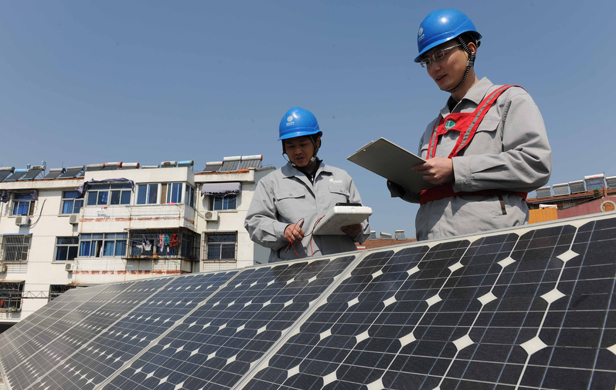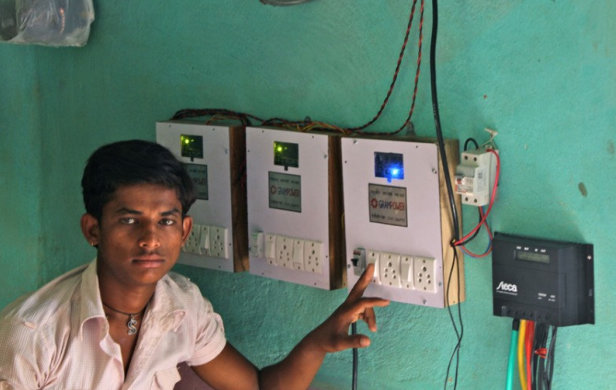
A recent article quoting executives from Exxon is an incredible example of the misinformation, half-truths and contempt for solutions to climate change that we continue to see from the oil and gas industry.
Five reasons while Exxon is full of crap
Exxon complains about the subsidies for renewables, making for an unlevel playing field where government intervenes to pick winners and losers. Furthermore, according to EXXON market prices should drive solutions. Fascinating!
1) No sector of the economy receives more subsidies than the fossil fuel sector. The IMF projected the 2015 global subsidies for fossil fuels at $5.3 Trillion/year
2) The IMF has calculated global subsidies for renewables at $120 Billion/year
3) Thanks to the Republicans and their Big Oil lobbyists, the US wind power subsidy the Production Tax Credit of 2.3 cents/kWh has expired and the Investment Tax Credit of 30% that applies to solar energy installations will expire at the end of 2016.
4) In sharp contrast with the unstable US subsidies for renewables, which undermine long term investments, US direct subsidies for the oil and gas industry amount to about $7 Billion/year. These generous allowances for the oil and gas sectors: a) go as far back as the 1890s; b) include a 1926 enacted Percentage Depletion Tax Credit that increases when the price of fuel goes up; and c) allow the industry to write off most drilling costs. Not to be outdone on archaic subsidies, based on US incentives dating back to the late 1700s, the US coal industry gets tax benefits now worth $5 Billion/year.
5) The European Wind Energy Association says that wind power can compete without subsidies if fossil fuel subsidies were to be abolished.
Big Oil business model collapsing
Exxon claims that the oil industry will have to increase production significantly, in particular from unconventional sources (eg tar sands, shale oil, offshore oil), to meet increases in global demands.
This model is based on: 1) demand for fossil fuels continuing to climb; 2) oil prices remaining high enough to justify continued investments in expensive-to-extract unconventional sources such as the tar sands, offshore and shale sources; 3) high oil prices justifying the pumping out of greater volumes of conventional oil to further increase profits; and 4) the growing concern about climate change failing to affect the bottom line.
Until recently, this business model worked like a charm, with Exxon earning $32.6B in 2013, more than any company other than Apple. Well, as it turns out, all of the above elements of the business model have hit a wall.

According to the US Energy Information Administration, 2015 global oil demand had originally been projected to be 103.2 million barrels/day, but this number has been adjusted to 93.1 million barrels/day, thereby undermining the viability of unconventional investments. Low prices cannot sustain the development of tar sands, shale and offshore oil.
This is translating into dangerously high debt loads, with assets being written off in the billions, thus generating a cascade of announcements of abandoned projects around the globe, putting tar sands projects on hold and pushing shale gas companies into bankruptcy. The US shale gas and oil sector now has accumulated a debt of $200 Billion!
Exxon blind to clean tech boom
Exxon sees the growth of renewables as limited because they are intermittent source of power. Here’s what’s wrong with that thinking:
1) There is massive investment all over the world in energy storage technologies and the linking of clean electricity sources to electric transportation that includes, among other things, bi-directional charging stations that can network the batteries of parked electric vehicles for additional energy storage, as required.
2) In 2011, the Chinese Development Bank committed $45B to smart grid technologies, including energy storage technologies.

3) China doesn’t seem to know about the supposed limits of renewables. As I noted in an earlier article this year, “…in just 2014 China’s new installations of wind and solar capacity amounted to 34 gigawatts (GW = a billion watts) of new electrical generating capacity, bringing the total installed capacity of wind and solar energy in that country to 114.8 GW and 28 GW respectively. In other words, China’s new clean energy installations added in 2014 represent nearly 3 times BC Hydro’s entire installed capacity of 12 GW and more than 70% of the total electricity capacity of Hydro-Quebec, 46.3 GW – but China installed all of this new capacity in one year!”
4) China’s mind-boggling increasing commitments to clean energy along with its goals for clean transportation – electric vehicles in particular – is galvanizing the development of its energy storage sector, expected to quadruple by 2025 to an $8.7 Billion/year market. Transportation/electric vehicle applications are projected to represent 85% of the revenues of this market, or $7.4 Billion in 2025. Clearly China is a global leader in linking clean energy to clean transportation, with integration technologies such as energy storage being a critical component of their green economy game plan. China’s clean transportation commitments are hard to beat regarding: a) $16B for the installation of electric vehicle charging stations; b) 30% of national government vehicle purchases to be electric beginning 2016; and c) a target to manufacture 2 million eco-vehicles per year by 2020.
5) Non-hydro renewables represented 47% of new electrical generation power installed in the US in 2014 and 75% of new US installations in the first quarter of 2015.
Despite all that, here’s what Exxon’s leaders have to say on the subject:
[quote]While we believe governments will take action to address the risk of climate change, we believe a policy scenario that completely transforms the global energy system at the unprecedented rate, pace and cost needed to stabilize greenhouse gas levels as contemplated in the 2°C scenario is highly unlikely.[/quote]
Turning the corner on GHGs
Global emissions reached a plateau in 2014, largely thanks to China’s massive investments in clean energy and reduction of GHG and coal use.
We don’t have any choice but to stay within the 2 degree limit, as not doing so will lead to catastrophic climate change. The prevailing wisdom is that 80% of the world’s fossil fuel reserves must stay in the ground to prevent the catastrophic scenario. Even Mark Carney, the Governor of the Bank of England acknowledges that this reality will lead to exceptional growth of stranded assets:
[quote]A growing number of senior figures in the financial community—some of them controlling many millions of dollars worth of investment funds—have been pressing fossil fuel companies to disclose how investments would be affected if energy reserves became frozen or stranded by regulatory moves associated with tackling climate change.[/quote]
Unconventional energy is debt and risk-heavy
Exxon says that technology has found a way to increase the resource base.
This is true except the costs of unconventional sources are prohibitive. The shale oil sector’s debt is staggering and all over the globe, fossil fuel companies are abandoning their reserves, also known as stranded assets.
Using poverty to promote fossil fuels

Exxon feigns concern for “the approximate 1.3 billion without electricity and the approximate 2.6 billion globally who use wood or dung stoves for cooking, which can lead to fatal indoor air pollution. What if we could supply all these too with affordable energy?”
The truth is that local clean energy micro-grids are the fastest and cheapest way to bring electrical power to those who don’t have any access or insufficient access. Just as many developing countries skipped the centralized landline telephone stage to go directly to mobile phones, the developing world can skip the centralized, expensive distribution infrastructure for delivering energy to isolated communities by setting up easy-to-install community clean energy micro-grids with minimal infrastructure.
Exxon: Oil fundamentalists
The views expressed by Exxon show a total contempt for climate solutions and a fundamentalist blind faith in a need to increase oil production, even to a point of implying that this is the solution to poverty. They disregard the reasons for the decline of the Big Oil business model and the staggering debt levels associated with unconventional fossil fuels. They’re allowing greed to confuse dictate their professional outlook. Apparently that’s the Exxon way.

